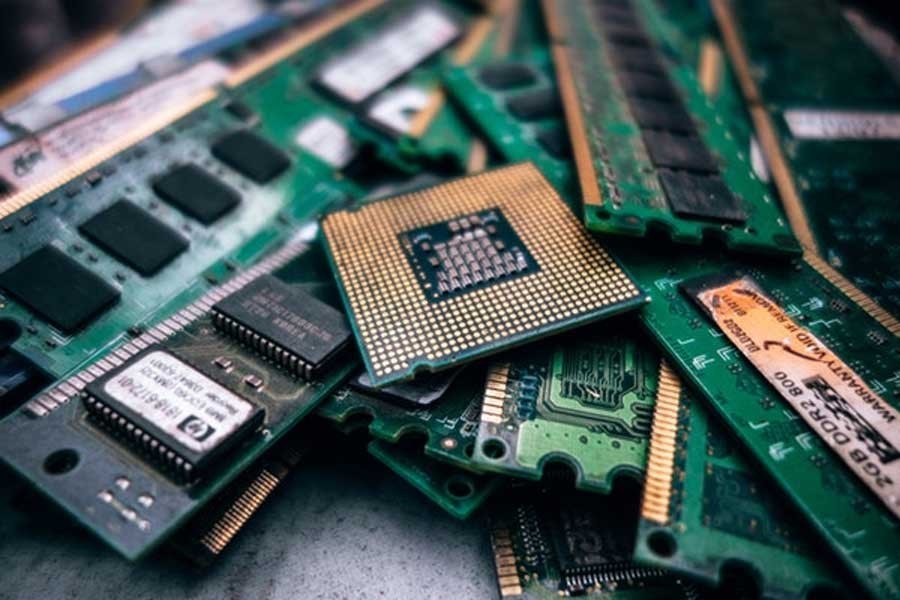
Published :
Updated :

The Government of Bangladesh has approved the Hazardous Waste (e-waste) Management Rules, 2021 under the Bangladesh Environment Conservation Act, 1995 and it is expected to be published in government gazette soon. The old, end of life electronic appliances and devices including computers, laptops, tabs, mobile phones, batteries, television sets, refrigerators, photo copiers. fax machines, air conditioners, washing machine, electronic printers, calculators, chargers, audio-video equipment, various household and kitchen appliances, communication equipment including microwave telecommunication devices etc., generally form electrical and electronic waste (e-waste). The e-waste management rules will help the Department of Environment to bring in all the extended producers of electrical and electronic waste manufacturers nationally under an adequate management system. The rules help determine responsibilities of different categories of waste manufacturers, assemblers, hoarders and recycling companies for their storage and disposal activities. The said rules will enable the Department of Environment to register the e-waste producers, manufacturer, large importer, dismantler, recycler, trader or shopkeeper, hoarder, transporter, repairer, collection centre, auctioneer and exporter and thus monitor their activities under the rules. The new rules will be applicable for the categories of electrical and electronic products related wastes like : household appliance, electronic monitoring and control equipment, medical equipment, various automatic machine and IT and telecommunication equipment. The e-waste management rules will prohibit import of old or used electrical and electronic products except for some exception (for the purposes of research use in the educational institutes having no objection certificate (NOC) from the Department of Environment (DoE).
Department of Environment hopes that the rules will help reduction and recycling of electrical and electronic wastes in the country. During registration the Department of Environment will approve plans for the amount of e-waste to be collected for dismantling and reusing as extended responsibilities by each of the producer/manufacturer for a period of time.
As the living standards of the people improve and country moves towards rapid urbanisation, people's dependence on electrical and electronic goods have been increasing. The electrical and electronic product manufacturers, assembling factories have been producing and bringing a wide range of their products in the market. A lot of electronic and electrical appliances have been imported in the country as well. Unfortunately, not all of the imported or locally manufactured electrical and electronic goods are durable. As a result electrical and electronic waste generation volume has been increasing in the country. Moreover, with the rapid technology changes people throw away daily a huge amount of electrical and electronic products as waste. A study report of DoE on 8 types of electrical and electronic products of the everyday use in 2018 has revealed that around 4 hundred thousand tons of electrical and electronic wastes are generated in Bangladesh annually. A BUET study report anticipates that the e-waste volumes (limited items) in the country will increase to 4,62 million tonnes in 2035. If the list is extended for the electronic wastes the annual volume will be significantly high. The published reports suggest that the e-waste generation in Bangladesh has been increasing annually at a rate of 20 per cent. Experts consider that the hazardous substances and chemicals contained in the e-wastes like lead, mercury, chromium, various chemicals and plastic additives may cause threat to human health if people get exposed to them during collection and crude recycling process. The collection of used electrical and electronic products and their partial reuse help limit the volume of wastes. However, a significant part of the e-waste including various hazardous waste are thrown away as solid waste in our environment causing contamination of soil and water bodies. Only approximately 10 per cent of the generated e-wastes are collected and recycled in the country so far.
On the other hand, proper recycling of the e-waste can help extract valuable metal like copper, steel, aluminum, zinc, lead and other precious and non-metal substances from the e-waste. A local company Azizu Recycling and E-waste Ltd. has been collecting e-wastes both from institutional (BTRC, Grameen phone, DELL, Greeen Line etc.) sources and from the waste collection vendors for last couple of years and recycle them. Approximately 1,000-1,200 tonnes of e-waste are being recycled annually at the Azizu plant at Fatullah, Naryanganj. Collected e-waste are initially segregated and separated manually or semi-mechanically in the factory. Large aluminum, copper, steel, rubber and plastic segments are separated and sold to various industries as raw materials for their production. On the other hand, small pieces of metals and dust of mixed metals (produced by specialised crusher and separator) from the electronic microchips and printed circuits boards in the factory are either melted to separate copper or exported (as mixed metal dust) to overseas market as raw materials of precious metal. From the waste metallic cable (usually aluminum cable coated with copper), copper is separated by electrolysis processes in the same factory. So far, Azizu recycling and e-waste Ltd. can not separate sophisticated precious metal (gold, silver palladium and rear earth minerals etc.) in the factory. But it has the intention to expand the factory and mobilise advanced technology to separate precious metals from the e-waste.
The Hazardous (e-waste) Management Rules, 2021 will compel at least large e-waste producers to systematically store and recycle their wastes. Thus new entrepreneurs may be encouraged to enter into the e-waste recycling business and advance the recycle, reuse and reduce e-waste. Institutional e-waste recycling and re-using business may help mobilise better technology to extract most of the valuable parts of the waste.
For DoE the challenge will remain to list all the electrical and electronic waste producers and their activities. Unless industrial clusters are created to bring all the e-waste generating companies and service providing industries/enterprises in the specific sites, challenges for DoE will be enormous for establishing effective monitoring and implementation of the rules.
Mushfiqur Rahman is a mining engineer,
writes on energy and environment issues.


 For all latest news, follow The Financial Express Google News channel.
For all latest news, follow The Financial Express Google News channel.